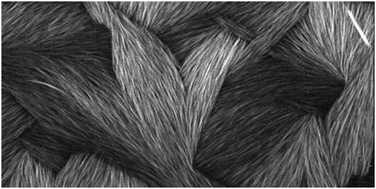Electrostatics and depletion determine competition between 2D nematic and 3D bundled phases of rod-like DNA nanotubes†
Abstract
Rod-like particles form solutions of technological and biological importance. In particular, biofilaments such as actin and microtubules are known to form a variety of phases, both in vivo and in vitro, whose appearance can be controlled by depletion, confinement, and electrostatic interactions. Here, we utilize DNA nanotubes to undertake a comprehensive study of the effects of those interactions on two particular rod-like phases: a 2D nematic phase consisting of aligned rods pressed against a glass surface, and a 3D bundled network phase. We experimentally measure the stability of these two phases over a range of depletant concentrations and ionic strengths, finding that the 2D phase is slightly more stable than the 3D phase. We formulate a quantitative model of phase stability based on consideration of pairwise rod–rod and rod–surface interactions; notably, we include a careful accounting of solution electrostatics interactions using an effective-charge strategy. The model is relatively simple and contains no free parameters, yet predicts phase boundaries in good agreement with the experiment. Our results indicate that electrostatic interactions, rather than depletion, are largely responsible for the enhanced stability of the 2D phase. This work provides insight into the polymorphism of rod-like solutions, indicating why certain phases appear, and providing a means (and a predictive model) for controlling those phases.


 Please wait while we load your content...
Please wait while we load your content...